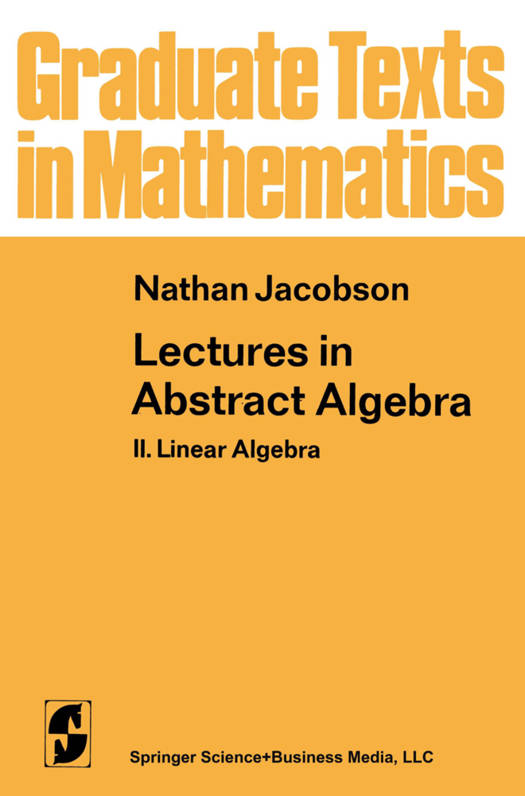
Door een staking bij bpost kan je online bestelling op dit moment iets langer onderweg zijn dan voorzien. Dringend iets nodig? Onze winkels ontvangen jou met open armen!
- Afhalen na 1 uur in een winkel met voorraad
- Gratis thuislevering in België vanaf € 30
- Ruim aanbod met 7 miljoen producten
Door een staking bij bpost kan je online bestelling op dit moment iets langer onderweg zijn dan voorzien. Dringend iets nodig? Onze winkels ontvangen jou met open armen!
- Afhalen na 1 uur in een winkel met voorraad
- Gratis thuislevering in België vanaf € 30
- Ruim aanbod met 7 miljoen producten
Zoeken
Omschrijving
The present volume is the second in the author's series of three dealing with abstract algebra. For an understanding of this volume a certain familiarity with the basic concepts treated in Volume I: groups, rings, fields, homomorphisms, is presup-posed. However, we have tried to make this account of linear algebra independent of a detailed knowledge of our first volume. References to specific results are given occasionally but some of the fundamental concepts needed have been treated again. In short, it is hoped that this volume can be read with complete understanding by any student who is mathematically sufficiently mature and who has a familiarity with the standard notions of modern algebra. Our point of view in the present volume is basically the abstract conceptual one. However, from time to time we have deviated somewhat from this. Occasionally formal calculational methods yield sharper results. Moreover, the results of linear algebra are not an end in themselves but are essentialtools for use in other branches of mathematics and its applications. It is therefore useful to have at hand methods which are constructive and which can be applied in numerical problems. These methods sometimes necessitate a somewhat lengthier discussion but we have felt that their presentation is justified on the grounds indicated. A stu- dent well versed in abstract algebra will undoubtedly observe short cuts. Some of these have been indicated in footnotes. We have included a large number of exercises in the text.
Specificaties
Betrokkenen
- Auteur(s):
- Uitgeverij:
Inhoud
- Aantal bladzijden:
- 280
- Taal:
- Engels
- Reeks:
- Reeksnummer:
- nr. 31
Eigenschappen
- Productcode (EAN):
- 9781468470550
- Verschijningsdatum:
- 15/01/2013
- Uitvoering:
- Paperback
- Formaat:
- Trade paperback (VS)
- Afmetingen:
- 156 mm x 234 mm
- Gewicht:
- 417 g

Alleen bij Standaard Boekhandel
+ 274 punten op je klantenkaart van Standaard Boekhandel
Beoordelingen
We publiceren alleen reviews die voldoen aan de voorwaarden voor reviews. Bekijk onze voorwaarden voor reviews.











